This article was medically reviewed by Shari Forschen, NP, MA. Shari Forschen is a Registered Nurse at Sanford Health in North Dakota. Shari has worked in healthcare since 1996 and her expertise lies in acute care bedside nursing on a medical oncology floor. She received her degree from Medcenter one College of Nursing in 2003 and her Family Nurse Practitioner Masters from the University of North Dakota in 2014. Shari is a member of the American Nurses Association.
There are 7 references cited in this article, which can be found at the bottom of the page.
This article has been viewed 254,722 times.
Research suggests that using a catheter to empty your bladder may prevent urine leaks and might reduce your risk of kidney damage or contracting an infection.[1] A urinary catheter drains urine from your bladder and into a toilet or special container, depending on your needs. Experts agree that it's important for catheters to be clean and sterile so you don't risk an infection, so it's important to know the correct way to handle them.[2] While using your catheter may be tricky at first, it should become easy once you've had some practice.
Steps
Using Your Catheter
-
1Get a professional demonstration. Doctors and nurses are trained in the best ways to insert catheters, so it's important you learn the best technique from a health professional, not just by watching videos or reading about how to do it. Before you leave the hospital or office, ask for a medical professional to demonstrate how to insert a catheter. Make sure that the professional is using the specific type of catheter that you need so that the demonstration pertains to you.[3]
- If you will be doing at home catheterization for a relative or friend, make sure that you are allowed in the room for the demonstration as well as step by step instructions with guidance while doing it for the first time.
-
2Obtain your catheter. Your doctor will very likely have a recommendation for a medical supply store or website from which to obtain your specific catheter.[4] It is possible that the doctor's office will send you home with one, but other times you will need to purchase one yourself. Note, these catheters generally need to be replaced after several uses or can be one time use only. Ensure that a spare is always available.
- Some medical supply companies include DVDs that you can watch to demonstrate how to insert a catheter. Try looking for one of these options if you are worried you might forget your doctor's technique. When in doubt call doctor's office or home health nurse for help.
- Ask your doctor about home health, and whether this is an option. Your doctor/provider may be able to arrange for someone to come to your home and assist in this process until you are comfortable in doing it independently.
- Check with your insurance carrier to see if they will pay for the necessary supplies.
Advertisement -
3Gather your supplies. When you are ready to insert the catheter, you'll want to make sure that you have everything you need. In addition to a clean catheter, you will need soap and water or sanitizing wipes. You will also need a water soluble lubricating jelly.[5]
- Be aware that petroleum jelly (or Vaseline) is not water soluble, and therefore should not be used.
- Many healthcare professionals recommend that you squat while inserting the catheter, so you may want to gather your supplies in your bathroom. Having the toilet there is a good idea.
- Use the lubricant to coat the tip of the catheter. This will make it easier to insert.
-
4Sanitize. Using the soap and warm water, wash your hands thoroughly. You do not want to transfer germs to the catheter or the vaginal area. Next, gently cleanse your genital area with soap and water.[6]
- For this step, you can also use sanitizing wipes. Always wipe from front of vagina to back to avoid introducing bacteria from anus into vagina or urethra. You'll just want to make sure that they are gentle enough for your genital area.
-
5Insert the catheter. Squatting over the toilet, spread the lips of your vagina with one hand. Use your finger or a mirror to detect the urinary opening (the place where you discharge urine). Next, insert the catheter slowly but firmly into this place (the urethra). Your urethra is located between your clitoris and your vagina, and is the tube from which urine drains from your bladder. You need to insert the catheter into this opening. When you feel yourself begin to urinate, stop inserting the catheter. Need to hold on to the catheter to ensure that it does not fall out while urine is passing through the catheter.[7]
- It may be tricky to find the right insertion spot your first time. Health care professionals recommend using a mirror to help you. Try placing a small hand mirror on a low shelf or stand, and squat over that instead of the toilet. This will help visualization. You can also ask a close friend or relative to help you.
- If you feel a sharp pain, stop inserting the catheter.
- If you feel pressure or mild discomfort, try to breathe through the feeling and keep inserting the catheter.
- Self-catheterization in the female patient can be very difficult as the urethra can be difficult it locate in specific individuals. If this is too difficult, an indwelling catheter may be of utility and may less distress.
-
6Clean up. Wash your hands with soap and water for at least 20 seconds after successful catheterization is complete. This will help avoid spreading infection.[8]
Caring For Your Catheter
-
1Clean the catheter. To keep the catheter clean, you first need to keep your genital area clean. Make sure to shower daily, using a mild soap and warm water to cleanse your urinary opening. Using the same gentle cleanser, rinse the part of the catheter where it enters your body every day.[9]
- When rinsing the catheter, make sure to hold it gently against your body. This will ensure you don't put unnecessary tension on the catheter.
-
2Clean the drainage bags. Thoroughly wash your hands before and after handling your drainage bag. Rinse the bag with warm water and cleanse with a gentle soap. Gently dry the bag with a clean towel before you reattach it to your leg.[10] Often times, if self catheterization, a drainage bag is not used. It is done several times per day just as one would need to use the bathroom throughout the day. If a drainage bag is used, this type of catheter would most likely be called an indwelling catheter that uses an inflated balloon filled with syringe to hold the catheter within the bladder and is attached to a drainage bag which will need to be emptied as it is filled throughout the day.
-
3Prevent infection. If you don't keep your catheter clean, you might be exposing yourself to infections of your urinary tract. Make sure to always wash your hands thoroughly before and after touching the catheter. Always make sure to be very thorough when cleaning your genital area.[11]
- This procedure in general increases the risk for infection. It is always best to urinate naturally whenever possible.
- Signs of infection can include foul odor from urine, fever, discharge or confusion. Most often a change in mental status (confusion) is noted in the older population and is a common sign of possible infection.
Understanding Catheterization
-
1Learn why you need a catheter. Your doctor will typically prescribe a catheter if you are unable to empty your bladder. Failure to eliminate waste might be a symptom of another medical problem, so make sure your doctor explains why you need this solution. Failure to urinate can lead to a buildup of pressure, which can in turn lead to kidney failure.[12]
- Neuromuscular conditions such as multiple sclerosis, spinal cord paralysis, or functional incontinence can make catheterization necessary. Ensure that you know the specific reason for the inability to urinate independently.
-
2Ask your doctor questions. When discussing your health issues with your doctor, make sure to be your own advocate. Don't be afraid to ask questions about what is causing your failure to urinate, and how a catheter can help. Make sure to ask whether the catheter is a long-term solution or a temporary measure.[13]
-
3Know the signs of a problem. Make sure to be aware of symptoms that can indicate an issue with your catheter, or an infection. If your urine is discolored or has an "off" smell, call your doctor. Other signs of problems can be increased lower pelvic pain, fever, or increased confusion or fatigue. You will also want to contact a medical professional if you have a temperature of more than 100 degrees.[14]
- If your catheter fails to drain urine, or if it falls out, contact your doctor immediately.
Warnings
- Consult your doctor before trying to use a catheter at home.⧼thumbs_response⧽
- It is important to understand how to do this procedure independently. If this is difficult to achieve on your own, an indwelling catheter may be a better alternative with weekly catheter changes.⧼thumbs_response⧽
References
- ↑ https://myhealth.alberta.ca/Health/aftercareinformation/pages/conditions.aspx?hwid=zc1151
- ↑ https://medlineplus.gov/ency/patientinstructions/000144.htm
- ↑ http://www.medscape.com/viewarticle/745908_10
- ↑ https://www.nlm.nih.gov/medlineplus/ency/patientinstructions/000144.htm
- ↑ https://aci.health.nsw.gov.au/__data/assets/pdf_file/0019/256132/ACI_Female_IUCv2.pdf
- ↑ http://www.medscape.com/viewarticle/745908_10
- ↑ https://aci.health.nsw.gov.au/__data/assets/pdf_file/0019/256132/ACI_Female_IUCv2.pdf
- ↑ https://aci.health.nsw.gov.au/__data/assets/pdf_file/0019/256132/ACI_Female_IUCv2.pdf
- ↑ https://www.mskcc.org/cancer-care/patient-education/caring-your-urinary-foley-catheter
- ↑ https://www.mskcc.org/cancer-care/patient-education/caring-your-urinary-foley-catheter
- ↑ https://www.mskcc.org/cancer-care/patient-education/caring-your-urinary-foley-catheter
- ↑ https://www.nhs.uk/conditions/urinary-catheters/
- ↑ https://www.nhs.uk/conditions/urinary-catheters/
- ↑ https://aci.health.nsw.gov.au/__data/assets/pdf_file/0019/256132/ACI_Female_IUCv2.pdf
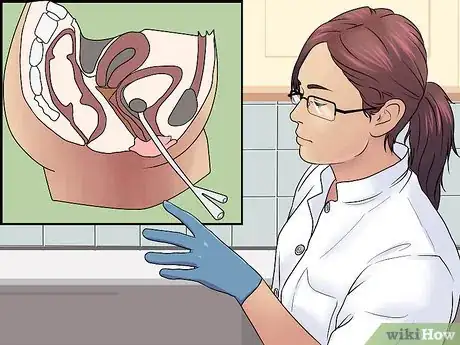



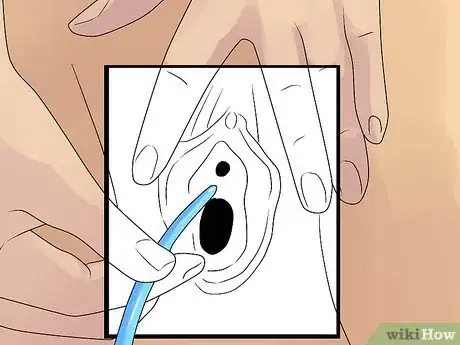

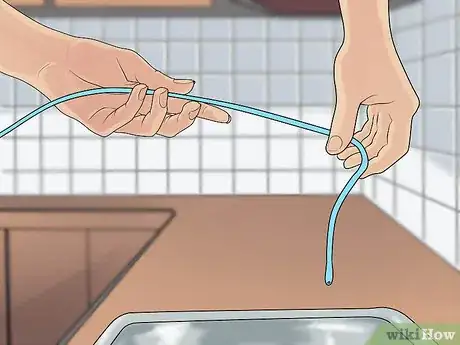
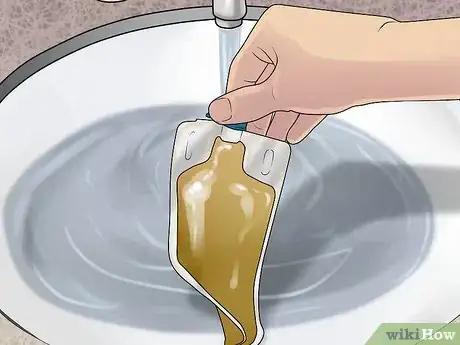
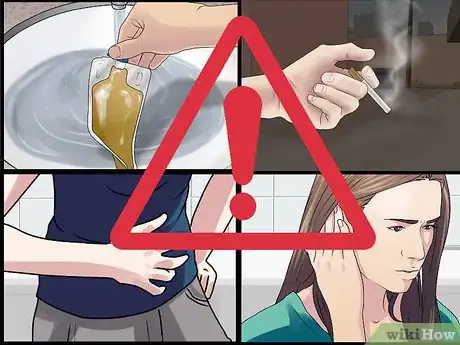
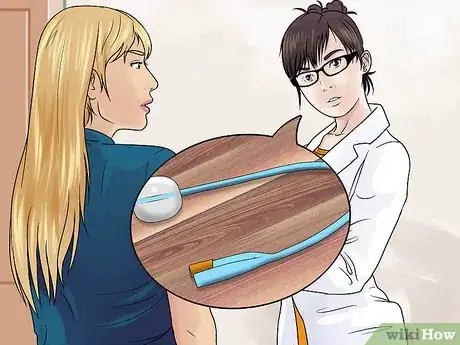


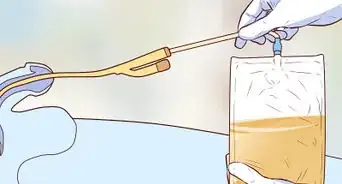




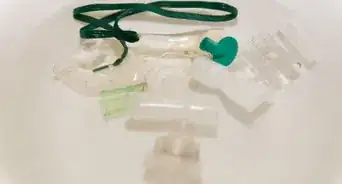




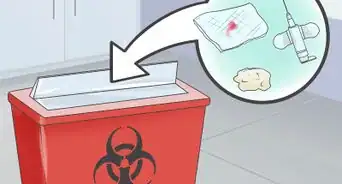







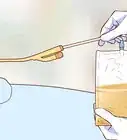

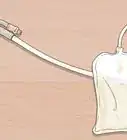
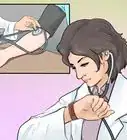



































Medical Disclaimer
The content of this article is not intended to be a substitute for professional medical advice, examination, diagnosis, or treatment. You should always contact your doctor or other qualified healthcare professional before starting, changing, or stopping any kind of health treatment.
Read More...